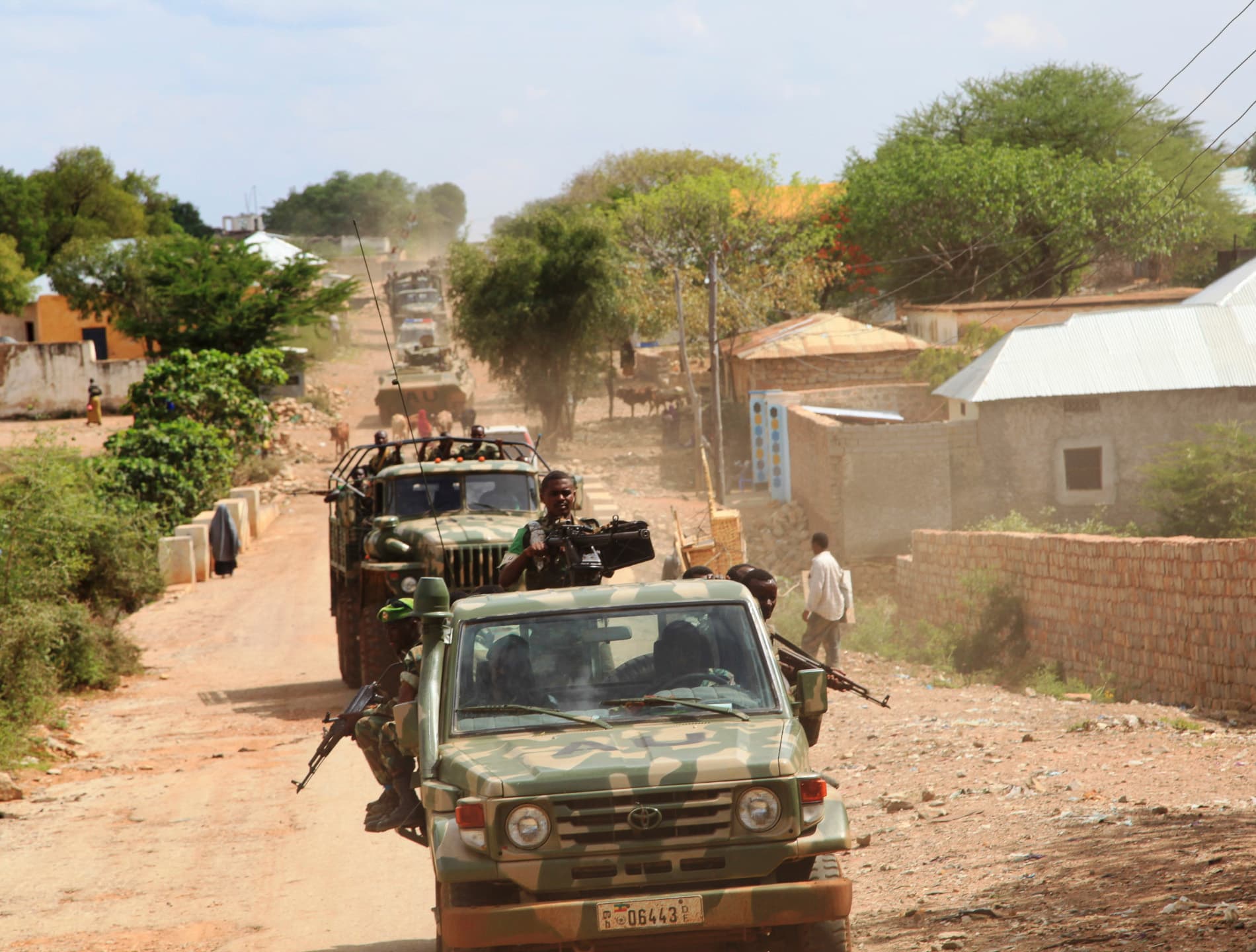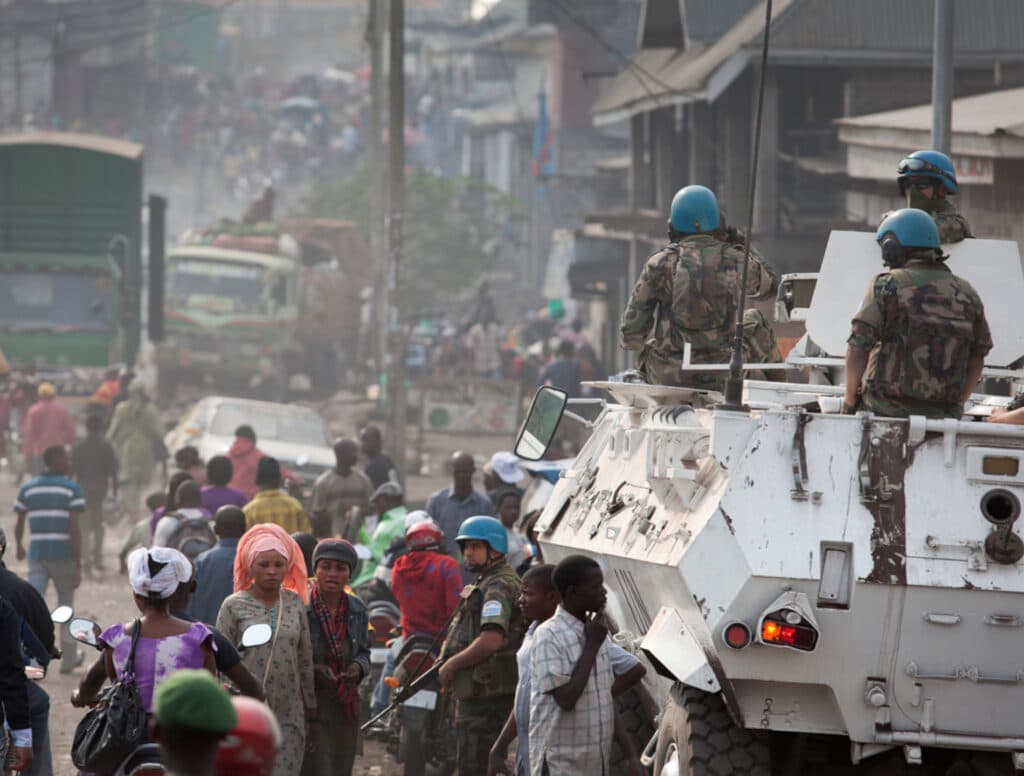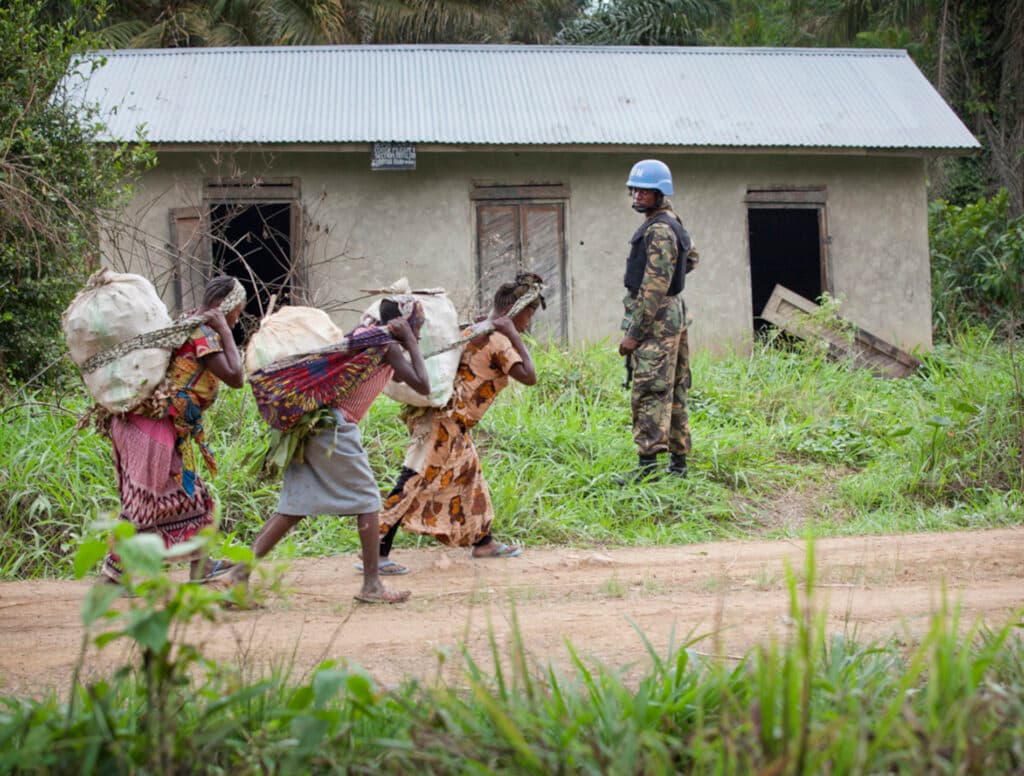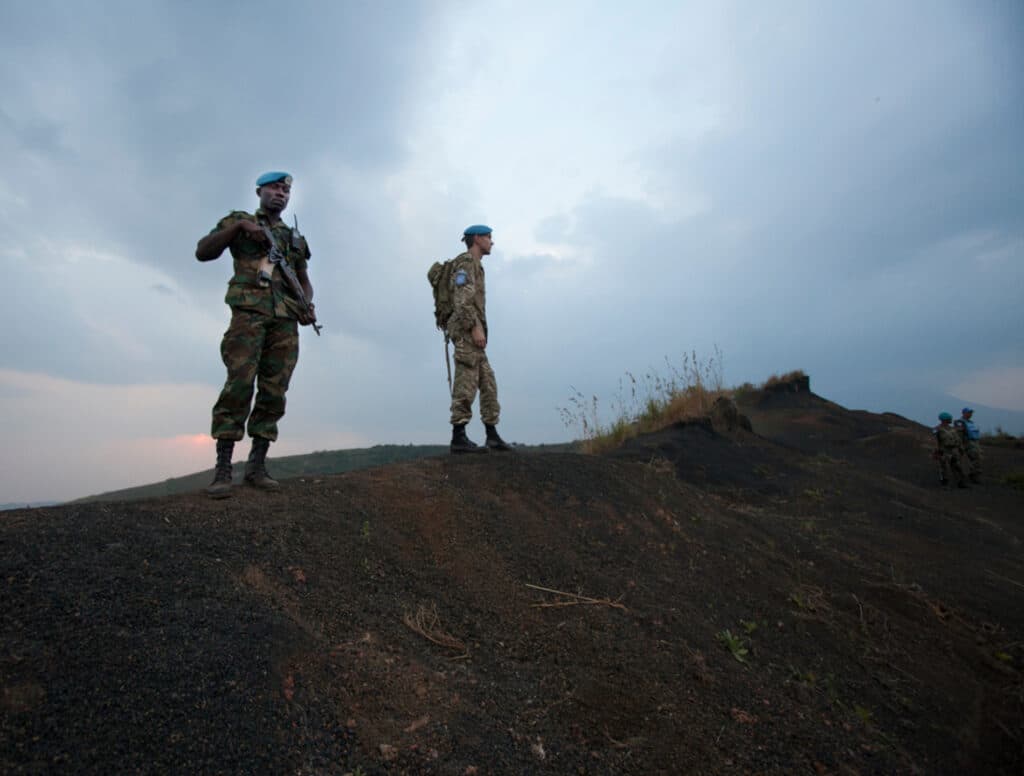
The principle of distinction
Protecting civilians and civilian objects during armed conflict.
A central notion under international humanitarian law is the principle of distinction: certain people and objects enjoy protection against attacks because of their civilian status.
The principle of distinction is a central notion under international humanitarian law (IHL). It allows only attacks on groups of people and objects that constitute the armed forces of a party to the conflict.
On contemporary battlefields, it is becoming increasingly difficult to make a clear distinction between those individuals and objects that are engaged in fighting, and those who are not. The line between civilian and military activities and functions has become blurred, which has resulted in greater uncertainty in how to apply the principle of distinction appropriately.
Whether a person or object belongs to the ‘military’ or the ‘civilian’ side makes a huge difference: a member of an armed force or someone taking part in hostilities may be lawfully directly attacked. When considered a civilian not taking part in hostilities, a person is protected from direct attack. In the same way, military objects may be directly attacked whereas civilian objects are protected.
Definition of lawful object of attack
The definition of a lawful object of attack varies depending on whether the target is a person or an object. The definition of armed forces depends on the type of conflict.
In international armed conflict (IAC), all persons who are neither members of the armed forces of a party to the conflict nor participants in a levée en masse are civilians. Therefore, they are entitled to protection against direct attack unless and for such time as they take a direct part in hostilities.
In non-international armed conflict (NIAC), all persons who are not members of state armed forces or organised armed groups of a party to the conflict are civilians. Therefore, they are entitled to protection against direct attack unless and for such time as they take a direct part in hostilities.
In non-international armed conflict, organised armed groups constitute the armed forces of a non-state party to the conflict and consist only of individuals whose continuous function is to take a direct part in hostilities (‘continuous combat function’).
Direct participation in hostilities
When civilians ‘directly participate in hostilities’ (DPIH) they lose their protection against direct attack. Unfortunately, treaty IHL does not define what acts amount to direct participation in hostilities. As a result, the issue gives rise to difficult questions. For example, is the driver of a truck carrying weapons ‘directly participating in hostilities’? What about a cook who prepares food for an armed force – is he DPIH?
To address the lack of clarity, the International Committee of the Red Cross (ICRC) invited military and humanitarian experts to a project, and drafted the following definition and criteria for DPIH.
Definition of DPIH in IHL
To qualify as direct participation in hostilities, a specific act must meet the following cumulative criteria:
- The act must be likely to adversely affect the military operations or military capacity of a party to an armed conflict or, alternatively, to inflict death, injury, or destruction on persons or objects protected against direct attack (threshold of harm), and
- There must be a direct causal link between the act and the harm likely to result either from that act, or from a coordinated military operation of which that act constitutes an integral part (direct causation), and
- The act must be specifically designed to directly cause the required threshold of harm in support of a party to the conflict and to the detriment of another (belligerent nexus).
Military objects
Article 52 of Additional Protocol I sets out the universally accepted definition of a military object, which, due to its customary nature (clarified by Rule 10 ICRC CUIL Study), applies to both IAC and NIAC.
A lawful object of attack is an object that by way of its nature, location, purpose or use, makes an effective contribution to the action of your enemy, and the neutralisation, destruction or capture would provide you with a military advantage. It is important to note that even if there is military object and hence can be lawfully targeted, core rules on proportionality and precautions must still be respected.
Examples of military objects
Military barracks
Military barracks are clear military objects by way of their nature. Clear utility for the enemy to train and accommodate soldiers and military equipment, and your military advantage would be to reduce the numbers and capabilities of the enemy forces.
Clothing factory used to store weapons
A clothing Factory which is being used to store weapons would likely be a military object due to the way in which it is being used. There is a clear utility for the enemy to store military equipment and the destruction would reduce the capabilities of the enemy forces. However, proportionality considerations may make it an unlawful target, and precautionary steps would have to be taken, such as warnings or attacking the factory at night when the workers are not present.



